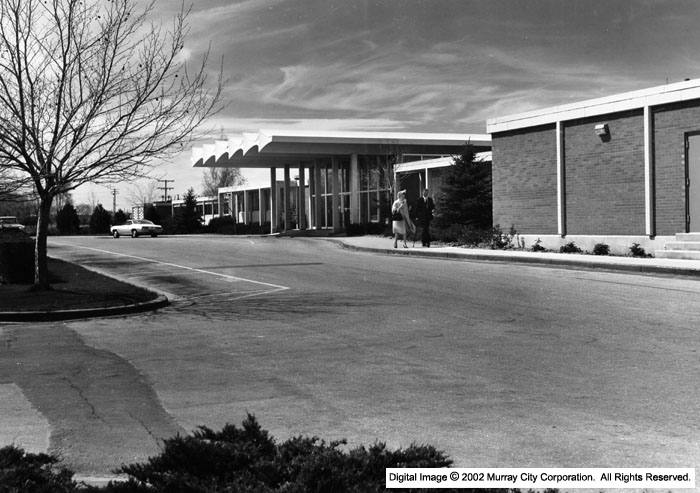⇦Previous Event
The First Radiological Exam

Cottonwood Hospital was a mere two miles southwest of our home. Just over a decade old, the hospital had been built by the LDS Church as a community hospital, an expansion of the Cottonwood Maternity Hospital, a small, 23-bed specialty hospital that had been organized in 1924 by the Cottonwood Stake Relief Society. Because of scheduling difficulties, we didn’t actually get to Cottonwood Hospital until the early afternoon of the following Tuesday, four days after my visit with Dr. Sundwall.
Picking me up from school and assuming we’d only be at the hospital for an hour, so my mother brought along my one-year-old brother, David, and my sister Christine, who had finished her half-day of kindergarten. We registered and then made our way to the radiology department, where the staff were somewhat surprised to see that my mother had two additional children with her.”You are going to be here a while,” a clerk said matter-of-factly. “You better have someone come pick up your other kids.”
Although my dad was usually hesitant to take time off of work, he was able to leave immediately and pick up David and Christine. Meanwhile I waited, sitting by my mother, watching meaningless images on a TV mounted to the wall, bored, nervous, until I was finally called back. My mother helped me change from my clothes to the hospital gown, but then said goodbye and I was escorted into the X-ray room by myself.
I shivered, standing there cold and nearly naked. The technician stepped on a pedal that lowered the large metal table in the center of the room.
“Climb up here,” she said blandly.
I climbed up onto the metal table, shivering from its icy bite on my legs.
“Now I want you to lie down on the table and pull your legs up like a frog.”
I laid down. Ouch! This table is really cold, I thought, but what does she mean by “pull your legs up like a frog”? My confusion didn’t matter. She grabbed my ankles and pushed them towards my buttocks then she pulled my gown up to my stomach, exposing my genitals. I could feel the flush of shame and fear spreading over my chest, neck, and head, but I sat there unmoving as she laid out a sterile towel on the table, opened a package with a long thin tube, and then put gloves on. She said very little, giving me no warning before she grabbed my penis, causing my whole body to tense, but I stayed quiet and I stayed still. It took all the self-control I could muster to continue lying still when she started inserting the tube into my penis.
Meanwhile, my mother sat patiently in the waiting room, watching the TV, flipping through hopelessly old issues of Redbook and Better Homes and Gardens, pulling out some crocheting to work on as the exam stretched into an hour and then two hours. She couldn’t leave. She wanted to talk with someone, but she was there alone. The time continued to accumulate, every minute seeming like five, until finally, after four hours, a radiologist walked into the waiting room.
“Mrs. Chapman,” he called out, scanning the room to see which woman responded. When my mother started to stand up, he walked over to her. “Have a seat, please. Your son doesn’t have a bladder infection, but he does have an obstruction in his right kidney. I’ll call Dr. Sundwall and talk with him about our findings.” No further information was provided her; none was provided to me.
My mother came back to the lockers, helped me get dressed, and we headed home. As we walked through the hospital halls, I expressed the great discomfort I felt.
Questions
- Some of the details in this narrative come from my mother’s diary. Is this a valid form of medical data?
- What are the different kinds of medical data that would have been generated during this scenario? Be as detailed as possible
- Following Floridi that all data are physical, what are some of the different physical forms data have in this scenario?
- I have no records from this radiological exam. I started collecting my medical records in 1992 when I was 24 years old. Current Utah law states that the medical records of a minor should be kept for “7 years or until the minor reaches the age of 18 plus 4 years (i.e., patient turns 22), whichever is longer. Utah Admin. Code r. 432-100-33(4)(c) (2008).” (“State Medical Record Laws: Minimum Medical Record Retention Periods for Records Held by Medical Doctors and Hospitals”). Physical space constraints and cost are pressures for destroying the medical records (e.g. the silver is recovered from radiology films). In a digital world, should medical records be kept for an indefinite duration?